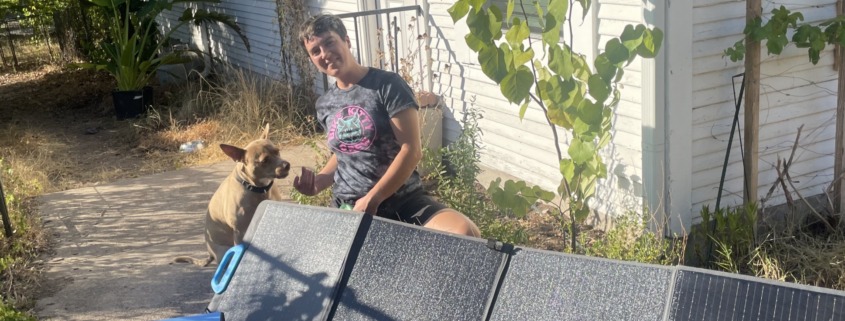Living Solutions: Carol’s Decarbonization Journey as a Renter
In our second installment of our Living Solutions Series, which focuses on how SSGers are taking climate action in their personal lives, we focus on our US Business Development Lead Carol Fraser. We hope their journey will provide some insight and inspiration for your own climate action journey!
Climate Action as a Renter
Across North America, more than a third of households are renters. Here in Austin, TX where I live, more than 56% of households are renters, a percentage which has been growing in recent years
Building operations are responsible for about half of Austin’s overall greenhouse gas emissions. Austin’s Climate Equity Plan has a goal to reduce emissions from existing buildings by 25%, and natural gas-related emissions by 30%. As a climate action consultant and advocate, I take these challenges personally! Unfortunately, as a renter, it can feel difficult to find ways to contribute to reducing emissions in the building I live in. What follows is hopefully inspirational to others who don’t own their home but still want to be part of the solution.
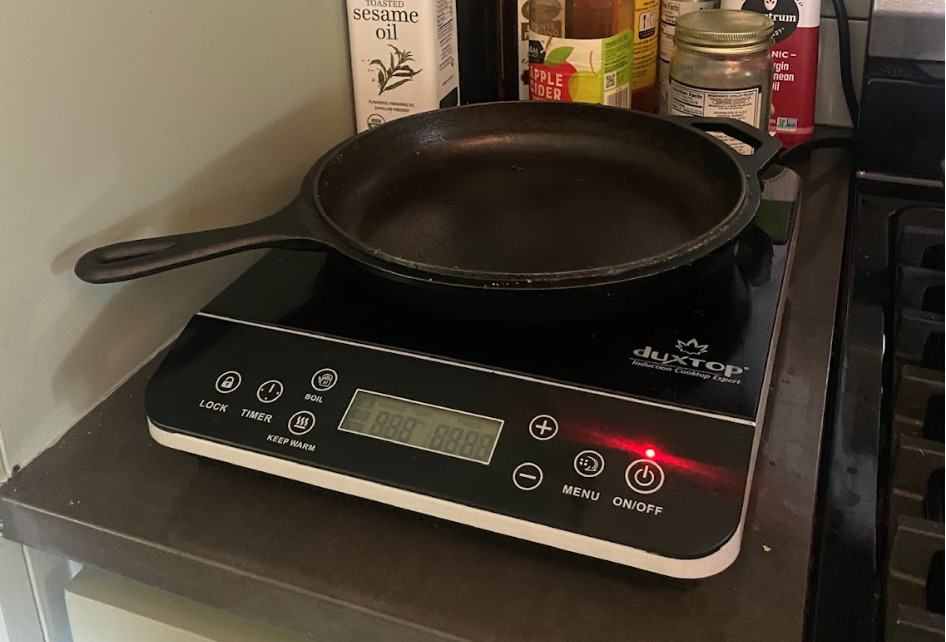
Carol’s one burner induction stovetop
Exclusive Use of a Portable Induction Stove
One of the downsides of renting is that you don’t often get to choose your appliances. In my current home, we have a gas stove, which lowers indoor air quality and creates methane emissions. My previous apartments have had electric coil stovetops, which provide an unsatisfactory cooking experience. But my in-laws have long had an induction stovetop, which rivals gas in terms of cooking quality. Induction stovetops are responsive, provide even cooking temperatures, and can be used with my existing cookware (cast iron and stainless steel). They can boil water faster than gas or electric burners while being three times as energy efficient and eliminating the need for natural gas infrastructure.
I cannot replace my gas stove with a built-in induction four-top because I do not have the 240V electric outlet necessary for installation; however, I can use a portable electric induction burner.
A one-burner model works with a regular outlet (120 V), so no electrical work is needed to install it. By combining it with an electric pressure cooker, we’ve completely eliminated our use of the gas stove. As a renter, induction stovetops are an easy investment to make; I can bring mine with me if I move house because it’s portable and easy to install.
Portable Solar Array and Battery
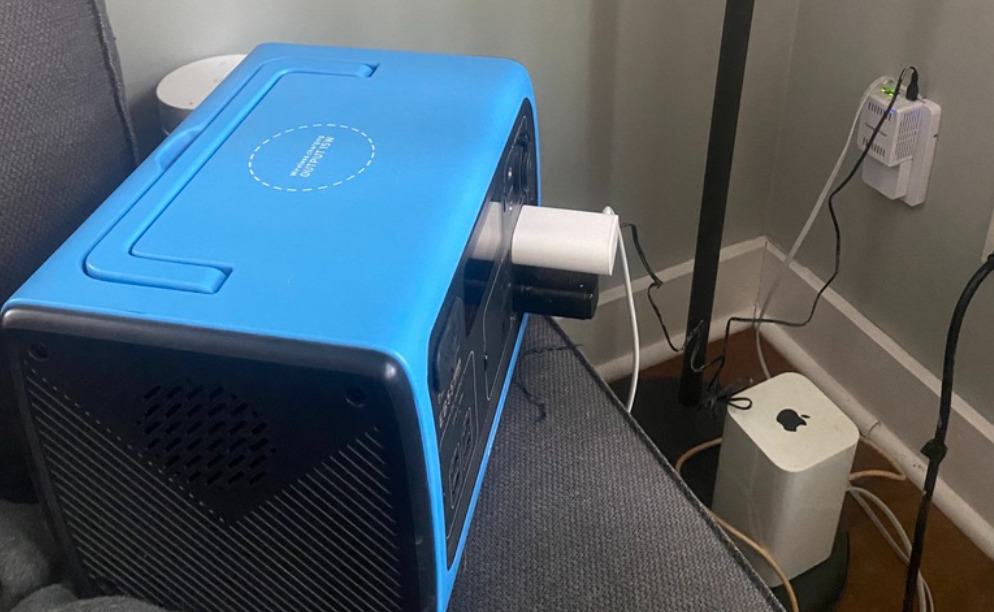
Carol’s portable battery unit
Speaking of portability, my partner and I invested in a portable solar array and battery after unexpectedly lost power for 5 days in frigid temperatures during the great Texas freeze of 2021. We wanted to find an affordable backup power solution that would provide us with increased resilience for similar extreme weather events.
Many of my colleagues at SSG who own their homes have installed solar panels on their rooftops, and are slowly recouping the cost over years of reduced utility costs. Although I’m not able to make a similar installation on my rental home, my solar array provides enough energy to charge my laptop, cellphone, e-bike, and other electronic devices. I recently used it to keep our wifi router going during an hours-long power outage! (The fiber internet cable was not affected by the outage.) By using renewable energy to power the machines necessary for me to do my work, I’m able to reduce my demand on the grid, resulting in a reduction of 155kg of CO2 annually.
Replacing Windows in a 1940s Era House
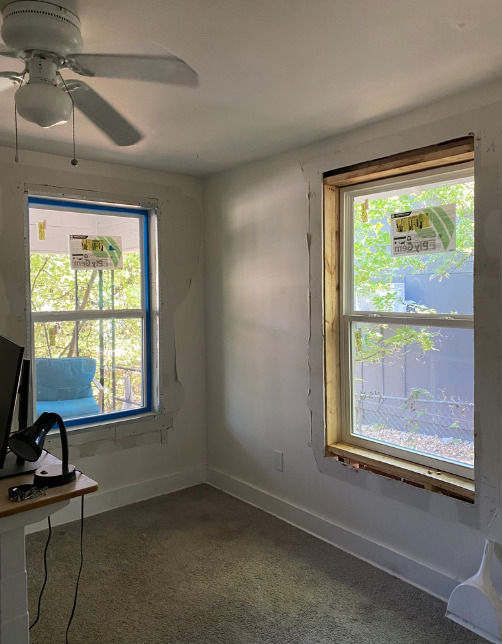
Carol’s replacement windows
I love being in a character home on Austin’s East Side, but the downside is having to deal with “character” features like drafty windows. After living through the Great Texas Freeze of 2021, when temperatures in my home went down to 3ºC (38ºF) for multiple days I became acutely aware of the importance of home insulation for keeping safe in extreme weather.
Windows represent 45% of the heat transfer of a building and can influence over 40% of a building’s energy use, especially in places like Austin where the temperature fluctuates dramatically. Luckily, my landlord appreciates the value of energy efficiency. When he started working on renovating another house for his own family, he offered to replace the windows in my home.
Though we experienced a couple disruptive weeks while the windows were being replaced, the result is a house that stays warmer in the winter and much cooler in the summer. We can even open the windows now to let in fresh air—a major upgrade. By reducing the amount of energy required for heating and cooling, I’m also saving on utility costs.
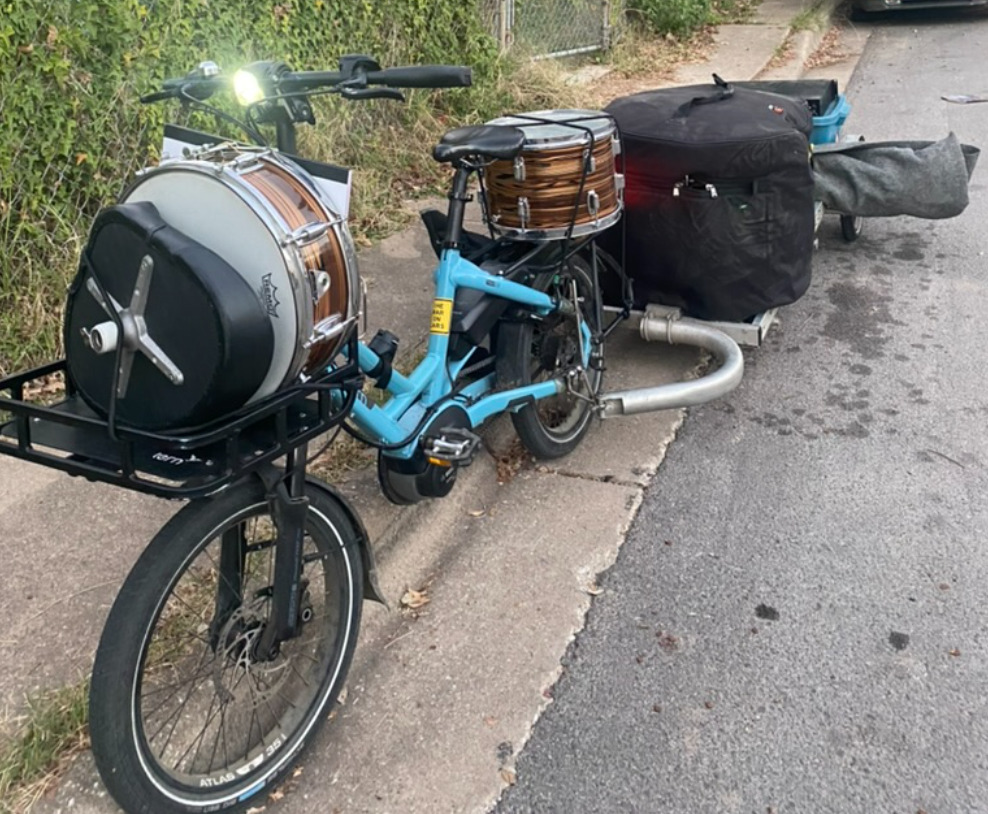
Carol’s e-bike and trailer loaded with a full drum kit and hardware
Moving House by E-Cargo Bike
When I decided to move to my current home, I thought it would be a fun project to try to do the whole thing on my handy dandy e-cargo bike. (Convincing my partner that it was “fun” was perhaps the bigger challenge.) With the help of a friend who had an extra-long bike trailer from Bikes at Work, my partner and I loaded up our reusable moving boxes and made approximately 15 round-trip journeys between our old home and our new one over the course of a month. The move was made easier by the fact that we moved within the neighborhood, making each trip relatively flat and short (less than half a mile).
Emissions from transportation in Austin were approximately 6 million metric tons of CO2 in 2019. By doing my move by bike, I prevent 4 kg of CO2 emissions for the move itself, and even more if you account for the journey I would have to take to pick up and return a rental vehicle (since I do not own one). Moving by bike also allowed me to be creative, have fun, and get some exercise in the process.
Portable Solutions
When renting property, it is hard to make investments into our living spaces because we can’t be sure how long we’ll be living in that location. However, with these types of portable solutions, I feel at ease knowing that I can take these improvements with me to my next home.
–
Carol Fraser is a consultant and US business development lead at SSG. As an analyst, Carol works on climate action planning projects for municipalities and regional governments, including the Washington State Utilities and Transportation Commission, the Oregon Global Warming Commission, the City of Tigard, OR, and the City of Bellingham, WA.

